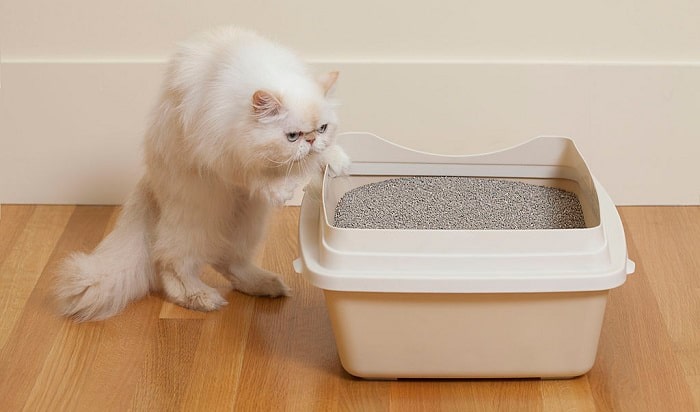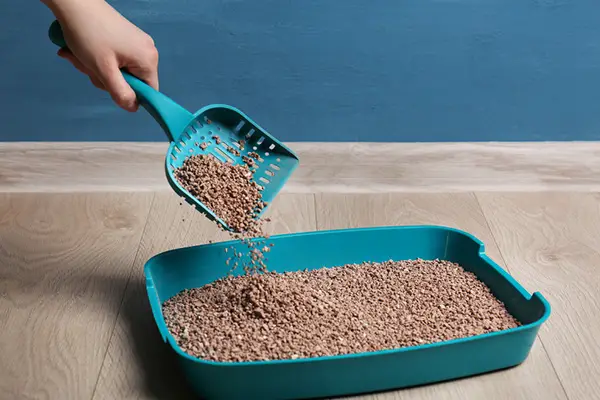Get interesting information about How Often Are You Supposed To Change Cat Litter, this article is specially curated for you from various reliable sources.

<h2>How Often Should You Change Cat Litter?</h2>
<p>As a seasoned cat owner of over a decade, I've had my fair share of litter-related misadventures. From tracking litter around my apartment to dealing with an unpleasant odor, I've learned the hard way that regular litter maintenance is crucial for my feline companion's well-being and my own sanity. In this comprehensive guide, I'll delve into the intricacies of cat litter changing, empowering you to create a clean and healthy environment for your furry friend.</p>
<p> Neglecting your cat's litter box not only compromises their hygiene but also their health. Feline urinary tract infections (UTIs) are a common consequence of infrequent litter changes, as dirty litter can harbor bacteria that lead to inflammation and discomfort. Furthermore, cats are known for their meticulous nature, and a soiled litter box can deter them from using it, resulting in inappropriate elimination behaviors.</p>
<h3>Frequency of Litter Changes</h3>
<p>The ideal litter changing frequency depends on several factors, including the number of cats, the type of litter used, and the individual cat's habits. As a general rule, aim to scoop solid waste daily and change the entire litter every 1-2 weeks. For multiple-cat households, increase the frequency of both scooping and full litter changes to maintain a pristine environment.</p>
<p>Certain types of litter, such as clumping litter, may extend the time between full litter changes. Clumping litter forms solid clumps around urine, making it easy to scoop and remove, leaving the remaining litter relatively clean. However, even with clumping litter, regular full litter changes are necessary to prevent the accumulation of bacteria and odor. </p>
<h3>Signs That It's Time for a Litter Change</h3>
<p>Aside from the recommended frequency, there are several telltale signs that indicate it's time for a litter change:</p>
<ul>
<li><strong>Unpleasant Odor:</strong> A foul odor emanating from the litter box is a clear sign that it's time for a refresh. Cats are sensitive to smells, and a dirty litter box can deter them from using it.</li>
<li><strong>Clumping Problems:</strong> If your clumping litter is no longer forming solid clumps, it's an indication that it's saturated and needs to be replaced.</li>
<li><strong>Excessive Waste:</strong> If you notice a significant increase in the amount of solid or liquid waste in the litter box, it's time for a full change to prevent overflowing and potential messes.</li>
<li><strong>Cat Avoidance:</strong> If your cat starts avoiding the litter box or urinating or defecating outside of it, it could be a sign of a dirty litter box.</li>
</ul>
<h3>Tips for Effective Litter Changing</h3>
<p>To ensure effective litter changing, follow these expert tips:</p>
<ul>
<li><strong>Use a Litter Scoop:</strong> A dedicated litter scoop is essential for removing solid waste without disturbing the clean litter. Invest in a scoop with large slots to allow clumps to pass through easily.</li>
<li><strong>Scoop Daily:</strong> Daily scooping prevents the accumulation of waste and helps keep the litter box fresh and inviting for your cat.</li>
<li><strong>Replace Gradually:</strong> If you're transitioning to a new type of litter, gradually mix it with the old litter to avoid overwhelming your cat.</li>
<li><strong>Consider an Automatic Litter Box:</strong> An automatic litter box can save you time and effort by scooping and disposing of waste automatically.</li>
</ul>
<p>In addition to these tips, consider these suggestions:</p>
<ul>
<li><strong>Use a Deep Litter Box:</strong> A deep litter box prevents litter from scattering outside the box and makes it easier for your cat to bury their waste.</li>
<li><strong>Place the Litter Box in a Quiet Area:</strong> Cats prefer privacy when using the litter box, so place it in a quiet corner away from high-traffic areas.</li>
<li><strong>Provide Multiple Litter Boxes:</strong> Multiple litter boxes are recommended for households with multiple cats or cats with different preferences.</li>
</ul>
<h3>FAQ About Cat Litter</h3>
<ol>
<li><strong>Q: What is the best type of litter for cats?</strong>
<p>A: The best type of litter depends on your cat's individual preferences. Some popular options include clumping litter, crystal litter, and biodegradable litter.</p></li>
<li><strong>Q: How often should I wash my cat's litter box?</strong>
<p>A: The litter box should be washed with hot, soapy water every 2-3 weeks to remove bacteria and odor.</p></li>
<li><strong>Q: Why does my cat avoid the litter box?</strong>
<p>A: Several reasons can cause cats to avoid using the litter box, including a dirty litter box, health problems, or stress.</p></li>
</ol>
<p><strong>Conclusion</strong></p>
<p>Regularly changing your cat's litter is essential for maintaining a healthy and harmonious relationship with your feline friend. By adhering to the frequency guidelines, recognizing the signs of a dirty litter box, and following expert advice, you can create a clean and comfortable environment for your cat to do their business. Remember, a happy cat means a happy home!</p>
<p>If you found this article informative, please share it with other cat owners or leave a comment below. Your feedback is invaluable in helping us provide the best possible information to the community!</p>

Image: www.furryfriendsgear.com
How Often Are You Supposed To Change Cat Litter has been read by you on our site. Thank you for your visit, and we hope this article is beneficial.